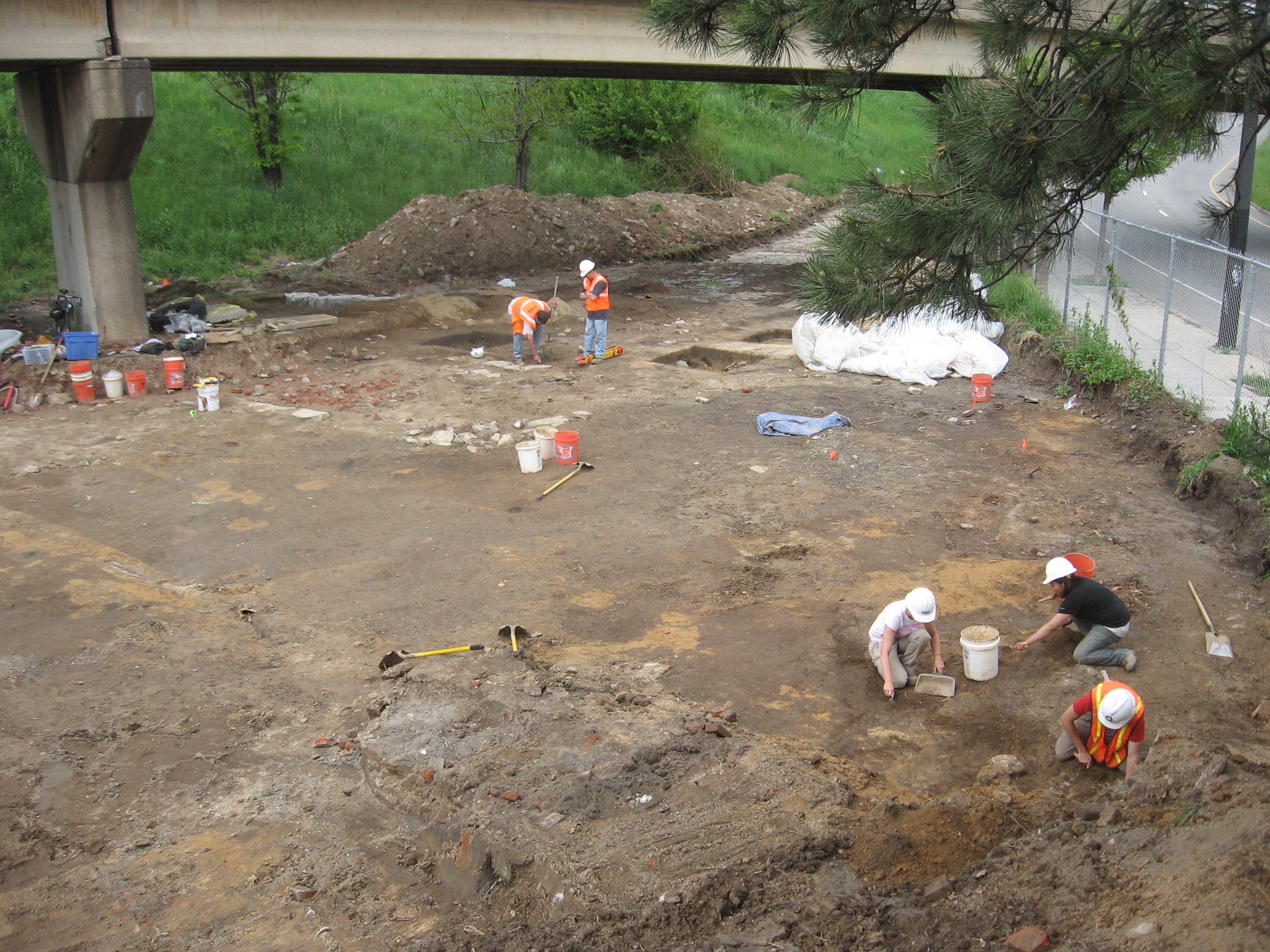The Columbia Avenue Site extended from East Columbia Avenue in the south to East Palmer Street in the north. The embankment to I-95 formed the western boundary and North Delaware Avenue formed the eastern boundary. This situation served to constrain the project to a triangular area bounded by the highway, East Columbia, and North Delaware Avenues. The Exit 23 ramp from I-95 North (Girard Avenue exit) split the area roughly in half. This triangular patch encompassed the backyards of the residences that lined the former Richmond Street before it was superseded by the construction of I-95.
| Site Name | Columbia Avenue |
| PASS# | 36PH0220 |
| Image | 1 image site overview |
| Dates of Excavation | 2009, 2011 |
| Phase of Excavation | Phase I, II and III |
| Number of Units | 95 |
| Approximate Number of Features Identified | 97 |
| Associated Periods | Mid to late nineteenth century |
| Site Acreage | 0.23 |
Testing began with several shovel test pits (STPs) to assess the presence or lack of fill horizons across the project area. The STPs confirmed varying amounts of fill associated with the construction of both I-95 and Delaware Avenue. Using this data, the fill was removed mechanically across the site.
The mechanical stripping revealed intact backyard-related soils (A horizon), foundations, and features associated with the former residences at 402 through 410 Richmond Street. Excavations were not performed near the corner of Columbia and Delaware Avenues; a twentieth-century filling station once occupied this area and testing here would have involved possible environmental hazards. After the removal of the modern overburden, 97 excavation units were emplaced across the site area to investigate the intact backyard/A-horizon soils and further uncover historic features and foundations. Hand and mechanical excavations revealed the foundations of six residences and seven of their associated shaft features.
The seven shaft features consisted of two circular brick privies, two circular brick cisterns, a wooden box privy, and a square brick shaft. Preliminary analysis of the artifacts from these shafts indicates that they date to the mid to late nineteenth century. Further analysis will offer insight into the daily lives of the families that lived along this section of Richmond Avenue.
